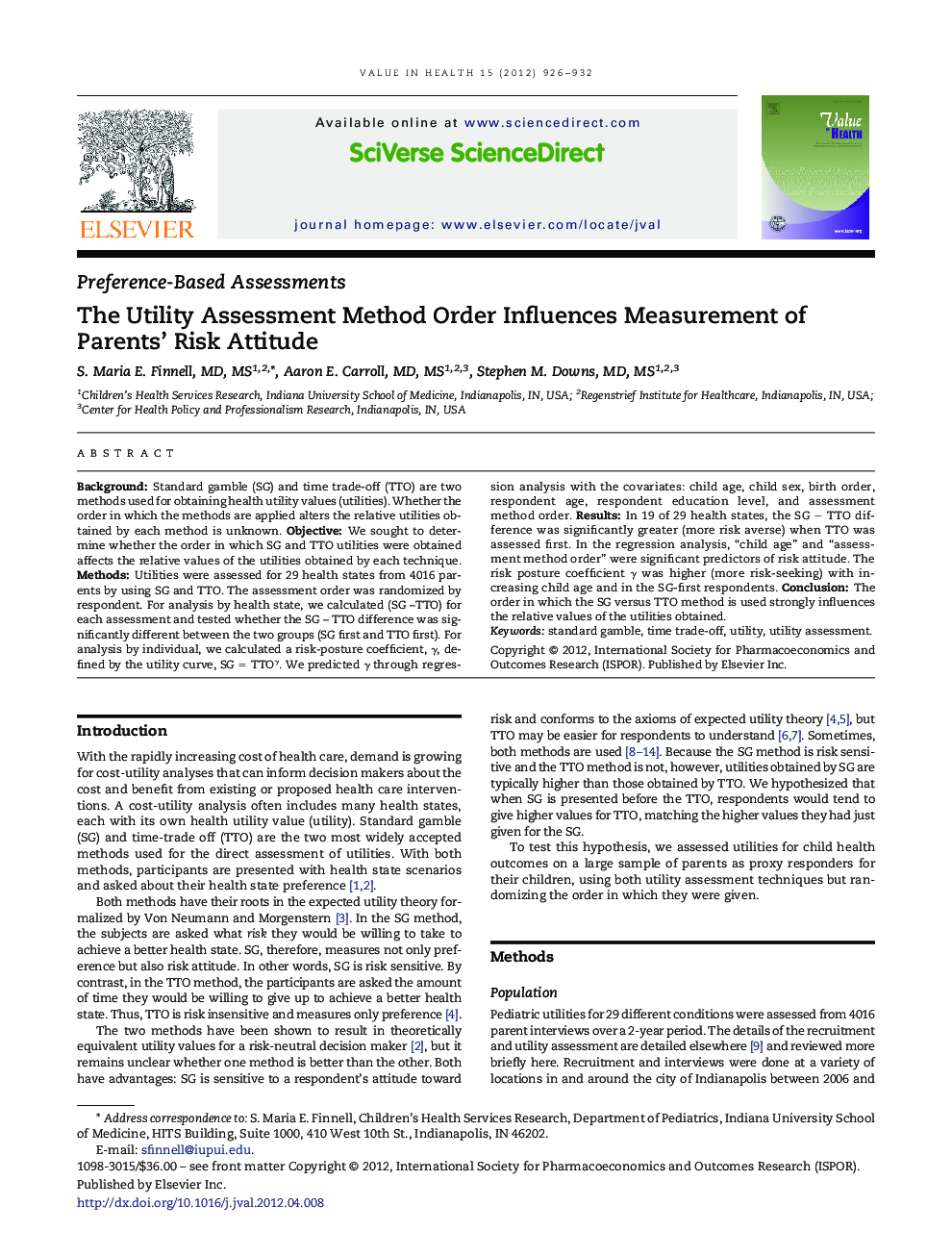| Article ID | Journal | Published Year | Pages | File Type |
|---|---|---|---|---|
| 987743 | Value in Health | 2012 | 7 Pages |
BackgroundStandard gamble (SG) and time trade-off (TTO) are two methods used for obtaining health utility values (utilities). Whether the order in which the methods are applied alters the relative utilities obtained by each method is unknown.ObjectiveWe sought to determine whether the order in which SG and TTO utilities were obtained affects the relative values of the utilities obtained by each technique.MethodsUtilities were assessed for 29 health states from 4016 parents by using SG and TTO. The assessment order was randomized by respondent. For analysis by health state, we calculated (SG –TTO) for each assessment and tested whether the SG – TTO difference was significantly different between the two groups (SG first and TTO first). For analysis by individual, we calculated a risk-posture coefficient, γ, defined by the utility curve, SG = TTOγ. We predicted γ through regression analysis with the covariates: child age, child sex, birth order, respondent age, respondent education level, and assessment method order.ResultsIn 19 of 29 health states, the SG − TTO difference was significantly greater (more risk averse) when TTO was assessed first. In the regression analysis, “child age” and “assessment method order” were significant predictors of risk attitude. The risk posture coefficient γ was higher (more risk-seeking) with increasing child age and in the SG-first respondents.ConclusionThe order in which the SG versus TTO method is used strongly influences the relative values of the utilities obtained.
